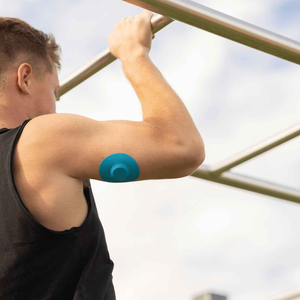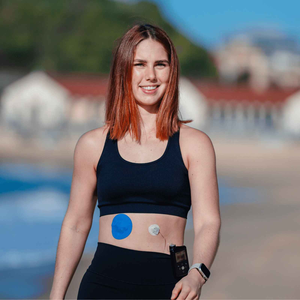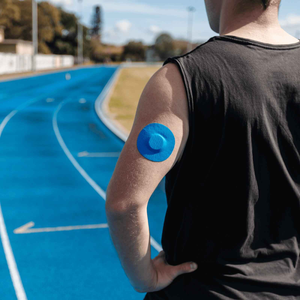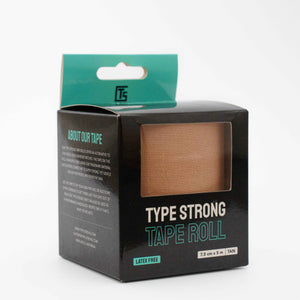Ever had your CGM spike on a day when you haven’t eaten much? You’re not alone. It often happens after time outdoors, a tough workout, or even a long meeting in air conditioning. The cause isn’t always food or stress - sometimes it’s as simple as dehydration.
When you live with diabetes, staying hydrated isn’t just about comfort. It directly affects your blood sugar levels, your energy, and how accurately your CGM keeps track of it all.
Why hydration and blood sugar are so connected
Water helps everything inside you work properly - from digestion to circulation. When you don’t drink enough, the fluid in your bloodstream drops. Glucose becomes more concentrated, so your levels appear higher even if your body hasn’t produced extra sugar.
A 2023 study in the European Journal of Nutrition found that mild dehydration can alter how the body handles glucose in both people with and without diabetes (European Journal of Nutrition, 2023). It’s one of those subtle things that shows up first on your CGM graph before you even realise you’re thirsty.
How dehydration affects CGM readings
Your CGM reads glucose from the fluid between your skin cells, not directly from your blood. When you’re dehydrated, there’s simply less of that fluid to measure, so readings can shift or lag behind your true levels.
|
Hydration level |
Body signs |
CGM changes |
What helps |
|
Well hydrated |
Clear urine, steady focus |
Stable and accurate readings |
Sip water through the day |
|
Mild dehydration |
Dry mouth, sluggishness |
Slightly higher or slower readings |
Rehydrate slowly and evenly |
|
Severe dehydration |
Dizziness, strong thirst, headaches |
Erratic or unreliable readings |
Rest, drink water gradually, replace electrolytes |
Even small shifts in hydration can affect your numbers. If your CGM trends higher without clear reason, a glass of water might settle things faster than an insulin correction.
Why dehydration pushes glucose higher
When your body starts to dry out, your kidneys conserve water instead of flushing glucose through urine. At the same time, stress hormones like cortisol increase, prompting your liver to release more sugar for energy. The mix of both raises your readings.

You’ll often notice this on hot travel days or after intense exercise. The rise looks like a food response, but it’s really your body protecting itself from water loss. Learn more in why your CGM sensor needs extra protection in summer.
Hydration, sweat, and patch wear
Hot conditions challenge more than your glucose control — they test your patch too. As you sweat, salt and oils build up on the skin, making adhesives loosen earlier than usual.
If you’ve ever had a patch peel mid-day, Type Strong Skin Adhesive Wipes can help. They clean the skin before application and strengthen grip, especially during humid or sweaty activities. For long wear or outdoor use, explore our CGM patch collection — each one designed for comfort and sweat resistance.
For more practical steps, visit how to prep your skin for patches.
Everyday ways to stay hydrated
- Spread your sips. Regular small drinks beat gulping water all at once.
- Check your colour. Pale-yellow urine is ideal; darker means you need more fluid.
- Stay mindful in heat. Keep a bottle handy when you’re outside or commuting.
- Skip sugary drinks. They might quench thirst briefly but raise glucose later.
- Refuel smartly. After long exercise or high sweat loss, add a low-sugar electrolyte drink.
If you spot an unexplained high on your CGM, ask yourself first — have I had enough water today? Many people are surprised how quickly readings smooth out after rehydrating.

You can also read how long a CGM patch should last for tips on maintaining adhesion during active days.
People also ask
Can dehydration make CGM readings inaccurate?
Yes. Less body fluid makes your blood sugar appear higher and can delay sensor response.
How much water should people with diabetes drink?
According to Diabetes UK (2024), most adults need six to eight glasses of water daily, or more in hot weather.
Does drinking water help lower blood sugar?
It supports kidney function and helps your body release extra glucose naturally, though it’s not an immediate fix.
What’s best to drink for hydration?
Plain water is still the winner. For variety, try water infused with lemon, cucumber, or mint.
Patch tip for warm weather
If your patch starts to lift, dry your skin gently and smooth it back down. A light reapplication using Type Strong Skin Adhesive Wipes helps restore the seal. Many active users carry a spare in their gym or travel bag — it’s a small backup that makes a big difference.
You’ll find more advice in why athletes and active users always keep spare CGM patches.
Hydration, confidence, and comfort
Hydration shapes how you feel, how you move, and how your CGM performs. By keeping up your water intake and protecting your sensor with reliable patches, you can stay ahead of both heat and high readings.

Type Strong products are built for real life — from busy days to tough workouts. Keep hydrated, stay steady, and let your CGM do its best work with you feeling confident, cool, and in control.
References
Diabetes UK (2024) Hydration and diabetes: why drinking water matters. Available at: https://www.diabetes.org.uk (Accessed 15 October 2025).
European Journal of Nutrition (2023) Effects of dehydration on glucose metabolism and insulin sensitivity. SpringerLink.
National Health Service (2024) How much water should I drink each day? Available at: https://www.nhs.uk.





